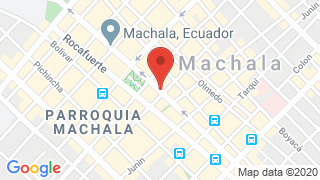El Oro Province



In El Oro province, there are beautiful beaches such as "Bajo Alto" and "La Puntilla" in El Guabo canton, "El Coco", near Puerto de Bolívar.
Among the natural tourist resources we can mention the Jambelí Archipelago and the Santa Clara Wildlife Refuge.
El Oro Tourism
- Buenaventura Reserve: The reserve is located in the El Oro province upper part, near Piñas city. This reserve has a wide variety of birds.
- Enchanted Lagoon of Chillacocha: The waters of this lagoon are of underground origin due to explosions. The people of the city say it is enchanted.
- Puerto Jelí: an old port where the boats that traveled to Guayaquil are anchored, today it is still useful for fishing boats.
- Magner Turner Mineralogical Museum: almost all the stones in the world are gathered in a single spot.
- Zaruma Historic Center: Known for the Sanctuary of the Virgen del Carmen and its beginning-of- the- century houses.
- Amor Lagoon (Love lagoon): it is an ideal place for nature lovers, since it develops a variety of bird species that nest and reproduce on this island. There is also a road and places to camp and enjoy.
El Oro Weather
The climate of the province varies by region. In the coastal area, the climate is dry in the summer and rainy in winter, while in the mountainous area the climate is rainy and the temperature varies according to the altitude, with about 25 ° to 35 ° C on the coast and the high plateau about 10 ° to 18 ° C.
El Oro Gastronomy
El Oro has two distinct areas: the upper part, where Zaruma and Piñas remain, whose mountains enjoy a more temperate climate, favoring crops such as coffee; and the bottom, the coast itself from Jubones river to Guayaquil bay, to become a privileged land for banana plantations and shrimp pools. Not surprisingly, the annual shrimp exhibition is held in Santa Rosa, while Mahala celebrates the World Banana Exhibition. These are good opportunities to try the best dishes of fish-based cuisine, seafood, green spices and rice.
The mangrove area is a large producer of shrimp for export, although some of these crustaceans can enrich local dishes. Banana is also prepared: flour, jam and pulp for export.
Due to its elevation and proximity, Zaruma and Piñas take influence in the mountains of the province of Loja, with which they maintain close ties that are apparently reflected in the kitchen. For example, peanut juice is widely used, prepared from Chinese potato sango, corn pudding with milk and sliced cheese.
In El Oro province, the most popular dishes are:
- Ball broth
- Leg broth
- Rice with stew and veal
- Pork or Chicken
- Tigrillo (cooked green, chopped in a pan, mixed with egg and cheese and roasted meat) with coffee
- Shell, fish, octopus
- Fish onion
- Sea food soup
- Seafood
El Oro province Costumes
It keeps intact their family traditions, customs and social practices. It was not affected by mass migration, it was easier to preserve, as well as urban and architectural heritage, which is its current strength. A recent dream past and, at the same time, uncertainties, affirmed its hospitality and culture. Arenillas can be considered as one of the main cities and cantons in the care of identity.
Horse races will take place in the first week of October.
Because it is a canton of rural roots, it has a great oral tradition and collective memory maintains a dense bag of data and narratives of religious, and ethical content.
El Oro Province History
Some Spanish adventurers went to Puna after they founded Guayaquil, arrived to Balao and then at the Jubones River mouth. In 1537, according to Torres de Mendoza, the Spaniards discovered Machala city, which could have reached Guarumal, south of the city. Machala did not have a Spanish foundation and was just a crossing point. In 1758, the lands were handed over to Machala to make their city, where San Jacinto neighborhood is today. Ambrose Gumal was the first ruler. In 1763 he finally gave the lands to Machala. Years later, Machala was promoted to the administration, during the government of the chief, Julian Belitama.
At the beginning of the 20th century, after the Puerto Bolívar- Machala railway inauguration, the construction of the Machala terminal was completed. After continuing the construction of the railroad in Pasaje, the project was completed in 1908. For a General Eloy Alfaro’s plan for the national rail networks, he would like to expand the streets of Machala: Loja, Cuenca and Duran, but this policy was not delivered. The economic route was fulfilled and the first one arrived only at the parish of Pierra, in the canton of Pina. The road had reached Cuenca, it remained in Pasaje and it should have reached Duran, it arrived in Iberia because of the overflow of the Jubones river in 1909.
When he arrived in 1910, relations between Ecuador and Peru were tense, so General Eloy Alfaro, commander of the army, arrived from Guayaquil to end the tense atmosphere, but also the King of Spain´s intervention, but the problem continued until years later.

Publicado en:
Publicado por:



